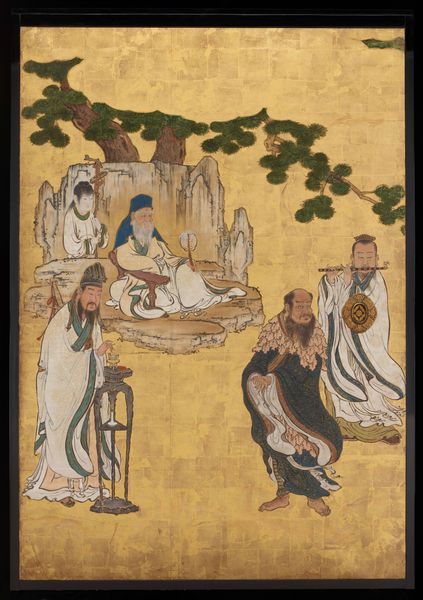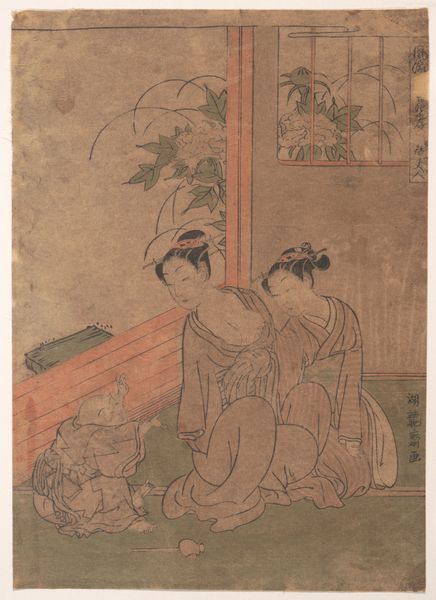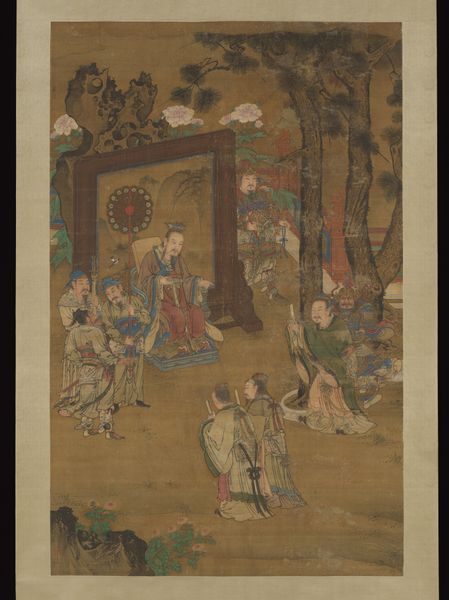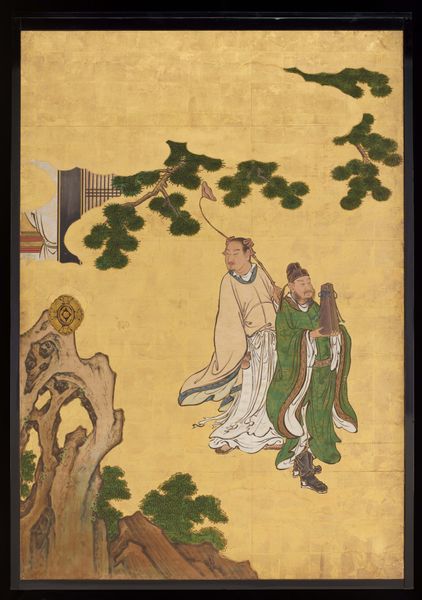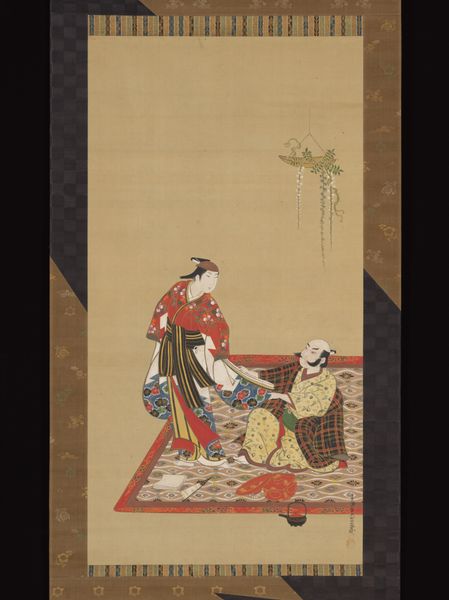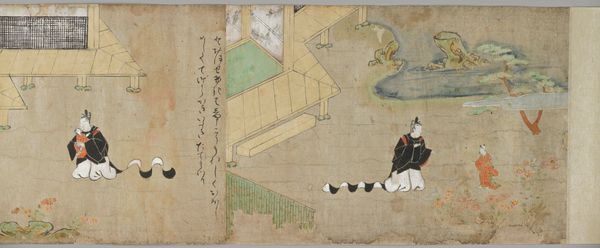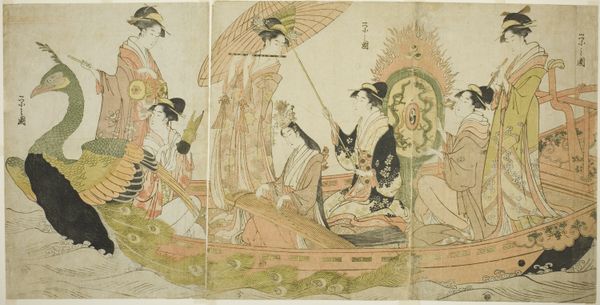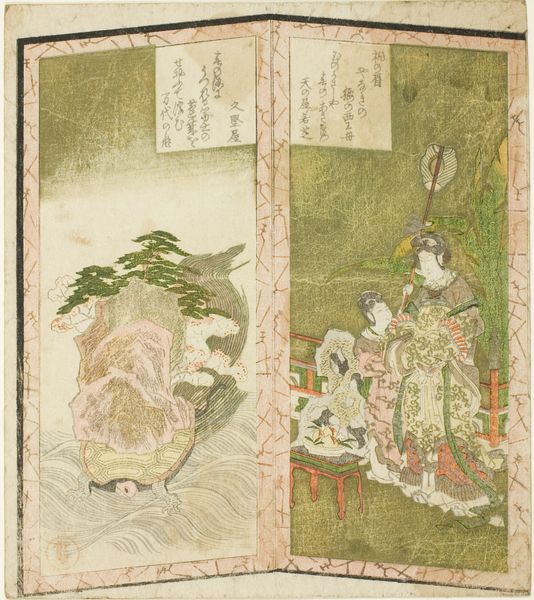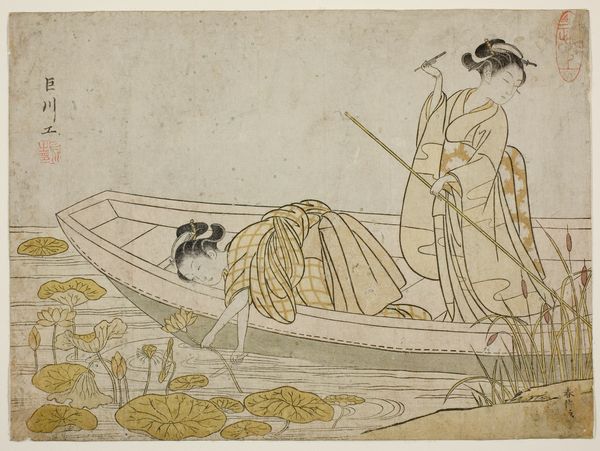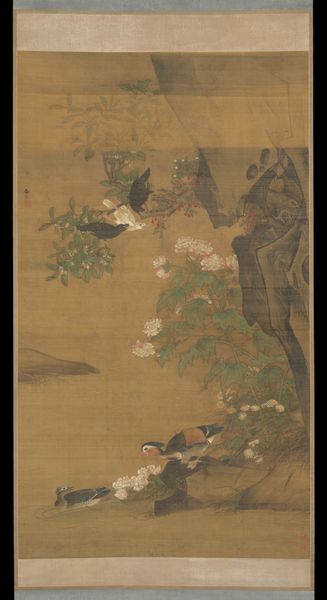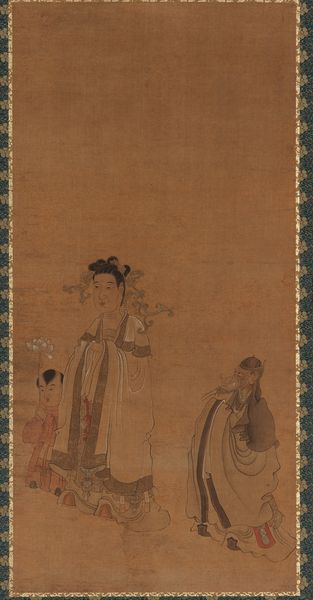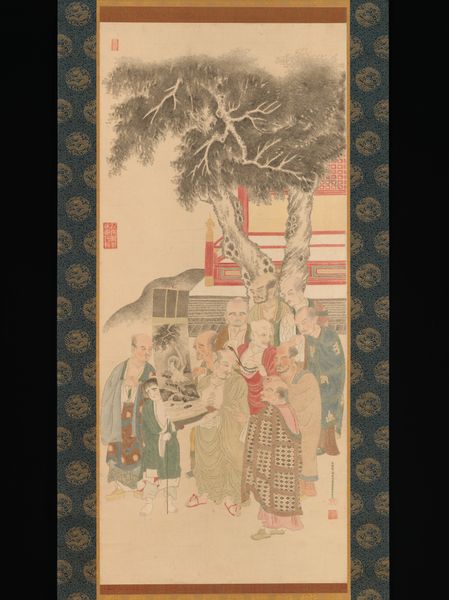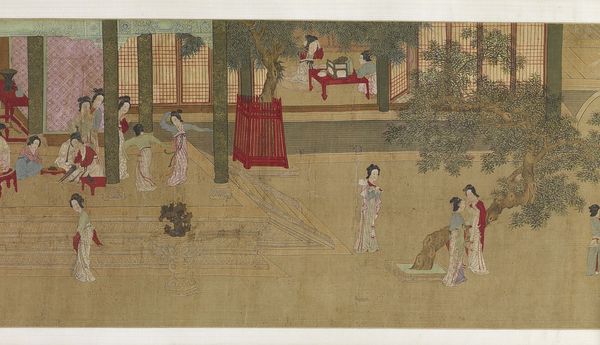
painting, paper, ink
#
narrative-art
#
painting
#
asian-art
#
ukiyo-e
#
japan
#
figuration
#
paper
#
handmade artwork painting
#
ink
#
naive art
#
genre-painting
Dimensions: 65 1/2 x 45 1/2 in. (166.37 x 115.57 cm) (image)69 x 49 x 1 3/4 in. (175.26 x 124.46 x 4.45 cm) (outer frame)
Copyright: Public Domain
Editor: Here we have Kano Sansetsu's "Li Tieguai," created around 1646, painted with ink and color on paper. There's almost a dreamlike quality to it, the figures set against that shimmering gold leaf. How do we contextualize this, considering its historical and cultural setting? Curator: Considering the historical moment, it's vital to understand the Kano school’s prominent position during the Edo period. They were essentially the official painters of the shogunate. Notice the emphasis on Chinese themes – the Daoist immortal, Li Tieguai. How might this connect with the political environment of the time? Editor: Was it a way of asserting a specific cultural or political identity? Curator: Precisely! It can be seen as an assertion of power through cultural association, linking the shogunate to the perceived wisdom and authority of Chinese tradition. The choice of subject matter, the style itself, reinforces the ruling class's legitimacy. What do you think about how the painter used gold and other expensive pigments? Editor: It feels like the materiality broadcasts wealth and patronage. Did this type of art serve other functions besides visual pleasure or projecting power? Curator: Absolutely. Think about its function within a domestic setting. Screens like these often served to divide spaces and establish hierarchies within the household. The imagery then wasn't merely decorative; it was actively shaping social relations, weren’t they? This tells us how powerful imagery can shape spaces. Editor: It’s amazing how much a single image can reveal about the societal structures of its time. Thanks! Curator: Indeed. It allows us a glimpse into the complex interplay between art, power, and identity in 17th-century Japan.
Comments
minneapolisinstituteofart almost 2 years ago
⋮
These sliding door panels (fusuma) show a group of Chinese Daoist immortals. The Chinese believed the immortals were historical and legendary personages who, through moral virtue, faith, and discipline, managed to transcend the bounds of the natural world and live forever. They were worshiped as saints. Old Chinese themes like this were admired in Japan by military rulers and Zen priests, who exalted Chinese culture and its heroes. This set of panels formed part of a much larger suite of paintings made for a temple in Kyoto. In the 1640s, Kano Sansetsu and his studio created hundreds of panel paintings for this temple. A devastating fire in the 1800s destroyed all but eight—the four panels you see here and four paintings that decorated their reverse, now in the Metropolitan Museum of Art in New York.
Join the conversation
Join millions of artists and users on Artera today and experience the ultimate creative platform.
